Samsung had unprecedented success last year delivering its Galaxy S line of flagship Android phones to a global stage, and for good reason: it launched as one of the thinnest smartphones in the world, the homegrown 1GHz Hummingbird processor was plenty fast for its day, and the 4-inch Super AMOLED display was a serious dazzler. Particularly impressive was its showing in the US, where Samsung managed to get all four national carriers — historically stubborn carriers — to release variants of the phone. But could it repeat the coup in 2011?
That’s where the Galaxy S II comes into play. Introduced to glowing reviews in Europe several months ago, Samsung has managed to get three of the four US nationals back on board for the sequel (the fourth, Verizon, is rumored to be holding out for an even higher-end Google Nexus device that could be launching in the next few weeks). Expectations are obviously high, and Sprint is the first to take a stab at it with the release of the gratuitously named Galaxy S II Epic 4G Touch. Is it worth your $199.99 on contract? Read on.
Notably missing is a set of earbuds, but as I’ve said in many reviews before, that’s just as well — pack-in earbuds are rarely any good
The packaging for the Epic 4G Touch isn’t particularly interesting or notable, apart from the fact that the name is de-emphasized — it’s relegated to the side of the box in smallish type (and with a name that long, I can’t say I blame them). The only thing you see on the front is an ultra-colorful representation of the phone’s screen, which is unquestionably one of its biggest selling points, and probably the first thing customers are going to notice when they walk into the store. Like most versions of the S II sold around the world, the Touch has a Super AMOLED Plus screen, 4.5 inches in this case — more on it in a bit. Inside the box you’ll find the battery, a micro-USB cable, a USB wall charger, and the usual assortment of documents and a bag for recycling your old phone neatly packed into a cardboard envelope. Notably missing is a set of earbuds, but as I’ve said in many reviews before, that’s just as well — pack-in earbuds are rarely any good.
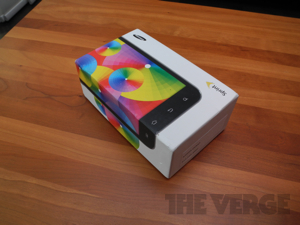
Hardware and design
The Touch is one of the most genuinely featureless smartphones I’ve ever seen — and I mean that in a good way
AT&T was quick to point out that its version of the Galaxy S II was "the nation’s thinnest 4G smartphone," and that’s true for the moment — the Epic 4G Touch is 9.65mm, about four-fifths of a millimeter thicker than the AT&T model. Presumably, the extra girth is attributable to a couple things: one, AT&T opted for a 4.3-inch model as opposed to Sprint’s 4.5; two, the Touch supports WiMAX, whereas AT&T’s doesn’t support LTE — it tops out with HSPA+. Regardless, unless you have both phones in your hand at the same time, it doesn’t make an appreciable difference. The Touch enjoys a phenomenon that we’re seeing on a lot of higher-end smartphones these days: it seems far thinner than it actually is, simply because the ratio of the surface area to thickness is so high. Put simply, 9.65mm is a lot "thinner" on a 4.5-inch phone than it would be on, say, a 3.7-inch phone.
Bottom line: this is a great-looking phone
As for design, the Touch is one of the most genuinely featureless smartphones I’ve ever seen — and I mean that in a good way. It’s nothing but screen; all of the other hardware details just sort of melt away into blackness. No chrome, no nonsense. On the left side is a relatively small volume rocker toward the top (or at least it seems small, but that’s partially because the phone itself is so big) and a hole for a lanyard or charm, if you’re into that sort of thing. The right side just has a power button, the same place as on the original Galaxy S and Nexus S; I’ve personally never been a big fan of that placement, but it’ll at least be an easier transition if you’re upgrading from one of those devices. The top of the phone has a 3.5mm headphone jack, while the bottom has a mic hole (toward the left side) and a centered micro-USB port — totally uncovered, by the way. Samsung has been especially keen for the last couple years on covering power ports with a flap or sliding cover, but not here. That’s just as well — micro-USB is fairly rugged by design, and the covers were more of a nuisance than a feature.
The back of the phone is a pretty big improvement over phones like the Epic 4G and Nexus S. Samsung was obviously paying attention to the complaints of gloss overload when it designed the S II, because the battery cover has a great-feeling textured pattern done up in matte black. The biggest problem with the glossy covers of old — other than the fact that they generally gave off a cheap look — was that they’d instantly scuff and scratch even with careful handling. That shouldn’t be an issue here. Adding to the premium appearance are the embossed "Galaxy S II" and "Sprint" logos, neither of which are large or gaudy enough to look out of place.
Bottom line: this is a great-looking phone. Like virtually all Samsungs, it trends toward the light and plasticky side, so the feel of the Touch in the hand isn’t necessarily as high-end as its appearance, but it’s not terrible either — there’s certainly nothing creaky, loose, or poorly constructed. To give you a sense of the weight, the first time I picked it up, I suspected the battery might not be installed. Some might prefer a light phone; I like them to be a little more substantial. It’s a matter of personal preference.
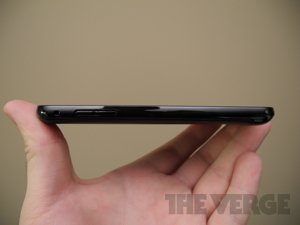
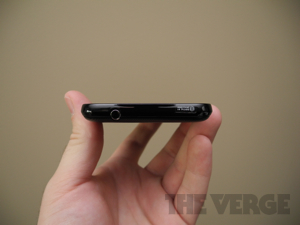

Internals, display, and sound quality
And what of that monster 4.5-inch Super AMOLED Plus display? It’s beautiful — seriously one of the most stunning displays I’ve ever seen

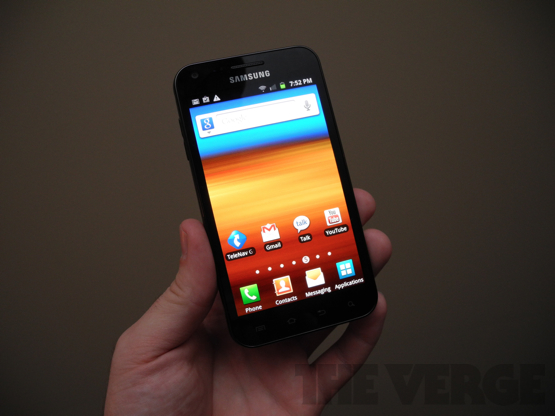
Just like the Galaxy S, most versions of the S II feature a homegrown processor — in this case, the 1.2GHz dual-core Exynos. Samsung hasn’t been shy about the fact that Exynos throws fireballs, and everything I’ve seen on the Epic 4G Touch tells me that the hype is real. Browsing — which can stutter on even the fastest single-core Android devices — absolutely flies with a buttery smoothness, even when you’re dealing with complicated layouts and embedded Flash ads. I consistently got Quadrant results of between 3,100 and 3,400, which marks the first time I’ve ever gotten scores of over 3,000 on a device out of the box. Granted, I don’t put a lot of stock in Quadrant or any other benchmark (Samsung might’ve learned how to game Quadrant, for all I know), but it’s still something to take note of — and my experiences with the UI and apps seem to back it up.
And what of that monster 4.5-inch Super AMOLED Plus display? It’s beautiful — seriously one of the most stunning displays I’ve ever seen. If you think that yellows and oranges look blown-out on older AMOLED and Super AMOLED displays, you get the same effect here — they’re very vibrant — but then again, pretty much every color of the rainbow is vibrant on this thing. Gone is the much-maligned PenTile arrangement, which means that shades of gray and monochrome patterns don’t exhibit much hint of color — if you’re looking hard enough, you can find it, but it’s not really noticeable the same way as it is on PenTile displays.
It’s not perfect, though. First off, WVGA just doesn’t cut it at 4.5 inches, particularly if you’ve had a chance to use a qHD phone like the Sensation, Atrix, and a few of the newer Droid models. Icons and text are almost comically large in some places. I’m sure there will be many users who don’t notice — and some who prefer UI elements to be a bit bigger — but I constantly felt hamstrung by the fact that I wasn’t taking full advantage of the physical real estate that a 4.5-inch display affords. Secondly, I had high hopes for improvements in outdoor viewability with Super AMOLED Plus; AMOLED displays tend to lag LCD in that department, and I didn’t see a huge improvement with the Touch. In direct sunlight, you can definitely squint and make out the display, but it’s not a comfortable experience even at max brightness (I used it side-by-side with a Droid Bionic here, and the Bionic fared far better).
Call quality on the Epic 4G Touch is quite good, and max volume is very loud both for the earpiece and speakerphone with minimum distortion. I don’t see a hole for a noise cancellation mic anywhere near the top, and my callers seemed to notice: I got a couple complaints about background noise while walking around downtown Chicago, but in quieter environments, I was told that I came through loud and clear.
Camera

The Epic 4G Touch is one of those rare phones where I actually feel comfortable saying you could use it in place of a midrange point-and-shoot — it’s that good, particularly for stills. The 8 megapixel sensor produces shots that only start to look soft if you zoom in really close, but if you’re just browsing through a gallery or using a shot as your desktop wallpaper, it does a stellar job. On the software front, Samsung has definitely put some effort into cleaning up the S II’s viewfinder — all pertinent settings can be reached from a single scrollable pop-up menu. Naturally, Exynos horsepower helps, too; I found autofocusing to be extremely quick, though you still shouldn’t expect to fire off a burst of 3 or 5 shots per second like you can with your DSLR.
I found the video quality to be decent, but like all 1080p phones, the highest resolution setting tends to be at the very outer bound of the phone’s capability — the results aren’t exactly what I think of when I hear "1080p." That said, it’s among the best you’ll find from a phone today.
The front camera advertises a resolution of 2 megapixels, but don’t be fooled — Samsung didn’t put a lot of time or money into it (nor should they have). It doesn’t seem much better than the VGA and 1.3-megapixel front sensors I’ve seen on other phones — the output is extremely soft — and considering that you’re only going to use it for video calling or the occasional "is my hair okay?" check, that’s just fine.
The Epic 4G Touch is one of those rare phones where I actually feel comfortable saying you could use it in place of a midrange point-and-shoot — it’s that good, particularly for stills
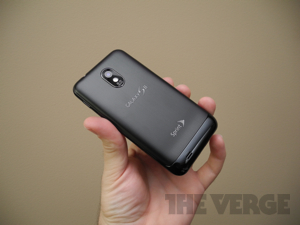
Battery life, performance, and data speeds
Android UI performance tends to be a wild card over time, particularly as you add more apps, but I’m encouraged by what I’ve seen so far

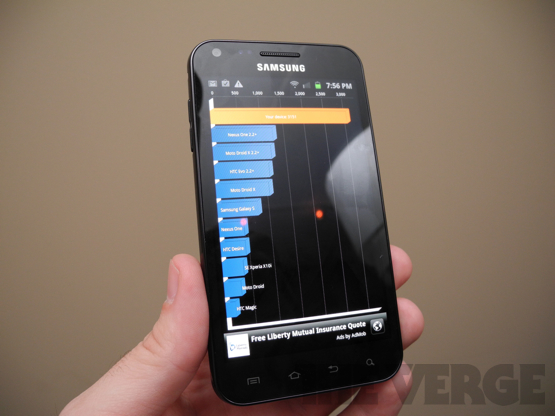
In my battery testing, I put the Touch through torture: continuous browsing on WiMAX with the display on full-time at roughly 65 percent brightness, which yielded 4.2 hours of use until it died. Not bad, especially considering I was browsing mostly white websites — tough for power drain on a large AMOLED display — and I was pulling in 4G data the entire time. More "typical" use yielded a little over ten hours of use on a mix of WiMAX and Wi-Fi, but I was still browsing heavily and placed one 40-minute phone call along the way.
As performance goes, I’ve already mentioned the Touch is a screamer, clocking stock Quadrant scores in excess of 3,100. Meanwhile, Sunspider 0.9.1 yielded 3455.2ms — a full 749ms better than the OMAP 4-powered Droid Bionic — and Neocore clocked a respectable 59.8fps (it’s capped at 60fps, so that’s basically maxed out). Everything about the user interface backs up the numbers, too: it’s consistently smooth. Granted, Android UI performance tends to be a wild card over time, particularly as you add more apps, but I’m encouraged by what I’ve seen so far.
Data speeds, of course, vary significantly depending on your local market and the time of day, but I was really impressed by the numbers the Touch was putting up here in downtown Chicago when I had WiMAX enabled: in my test runs, I got speeds between 8.4Mbps and 13.1Mbps down using Ookla’s ubiquitous Speedtest.net app. The upstream was a little less impressive — 1.3 to 1.5Mbps — but for most, it’s the downstream that matters most. Latency swung between about 70 and 95ms.
Enabling WiMAX naturally impacts battery drain, and I thought it was interesting that the Touch comes out of the box with it disabled — it’s a stark contrast to Verizon’s strategy of shipping its LTE phones with max speeds turned on. Fortunately, enabling it is a simple matter of pulling down the notification drawer and tapping the 4G button, which is also good to know if you’re going to be outside of a WiMAX market for an extended period of time.
Software
Sprint and Samsung appear to have shown a lot of restraint regarding third-party apps and crapware
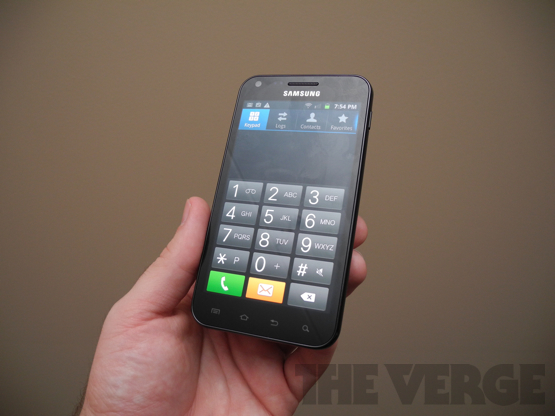
As you might expect, the Epic 4G Touch is a TouchWiz device. I haven’t been a big fan of TouchWiz since the early days, pre-Android, when widgets were still a cool novelty — but I’m used to it at this point, and in my experience, most consumers don’t seem to share my disdain for it. To Samsung’s credit, they’ve made one key modification here that I think goes a long way toward solving my complaint that it’s too cartoonish: they’ve eliminated the randomly colored squares behind each icon in the app drawer. It’s a small change that makes a big difference.
Kies Air is a brilliant feature on Samsung’s part, and it’s something the company should be playing up in all of the S II’s stateside marketing
Sprint and Samsung appear to have shown a lot of restraint regarding third-party apps and crapware. Besides the typical TouchWiz apps, the phone throws in a shortcut to download a trial version of N.O.V.A. 2 HD ($4.99 for the full game), NASCAR, Sprint ID, Sprint Mobile, Sprint Music Plus, Sprint Radio, Sprint TV & Movies, Sprint Zone, and TeleNav GPS. Some — NASCAR and Sprint Music Plus, for instance — can be uninstalled, but some cannot.
I frequently use USB mass storage mode on my Android phones, and I was disappointed to see that the Touch doesn’t have it set up by default. I ended up figuring out that I could get it going by enabling USB debugging mode, connecting the cable, then choosing the USB item in the notification list, which the average user is liable to never figure out. There’s a silver lining, though: in the process of trying to figure out this problem, I started using Kies Air instead — and I was blown away.
Basically, Kies Air is a web server on the Touch that lets you download and upload media and view your text messages, contacts, and call logs from a desktop browser. It couldn’t be simpler to use — start up the app on the phone and use your PC’s browser to connect to the URL it lists (the computer needs to be on the same Wi-Fi network, of course). As soon as you connect, the phone will prompt you to authorize the computer that’s trying to connect, and then you’re good to go. I was able to download the pictures I’d taken en masse using the built-in Java-based utility, which totally got me around the issue of using USB mass storage in the first place. It’s a brilliant feature on Samsung’s part, and it’s something the company should be playing up in all of the S II’s stateside marketing.


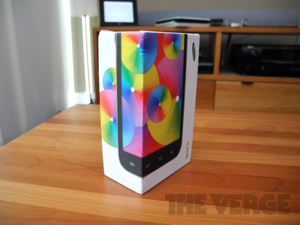
The Epic 4G Touch is among the best Android phones I’ve ever used, no question about it — and considering its Galaxy S II pedigree, that doesn’t come as a big surprise
The Epic 4G Touch is among the best Android phones I’ve ever used, no question about it — and considering its Galaxy S II pedigree, that doesn’t come as a big surprise. It’s also perhaps the fastest. The only problem is that a WVGA screen is getting to be a really tough sell in this price range, particularly considering the massive display that only serves to exacerbate the issue; Sprint’s EVO 3D from HTC and Photon 4G from Motorola both do qHD resolution for the same price, so that’s something potential buyers will need to take into consideration.
:format(webp)/cdn.vox-cdn.com/uploads/chorus_asset/file/12788565/gsii-epic-4g-touch-review-63-1000.1419962248.jpg)
:format(webp)/cdn.vox-cdn.com/uploads/chorus_asset/file/12788565/gsii-epic-4g-touch-review-63-1000.1419962248.jpg)
Share this story